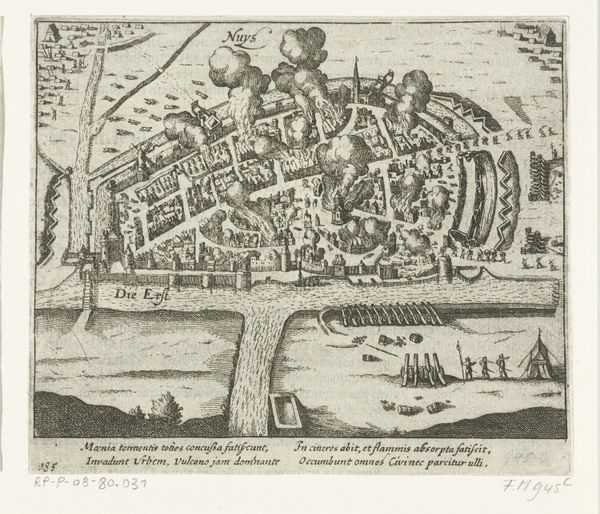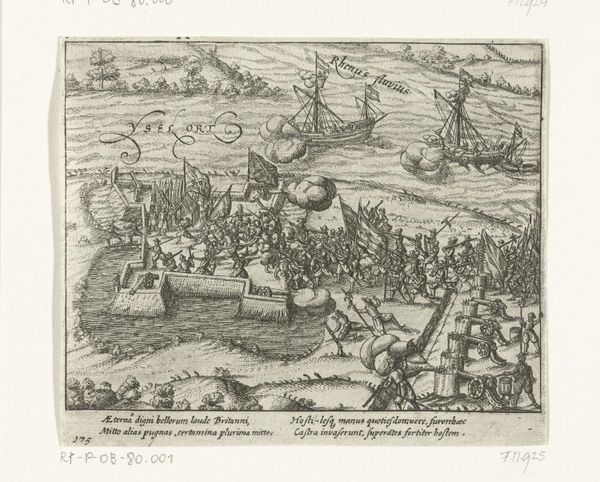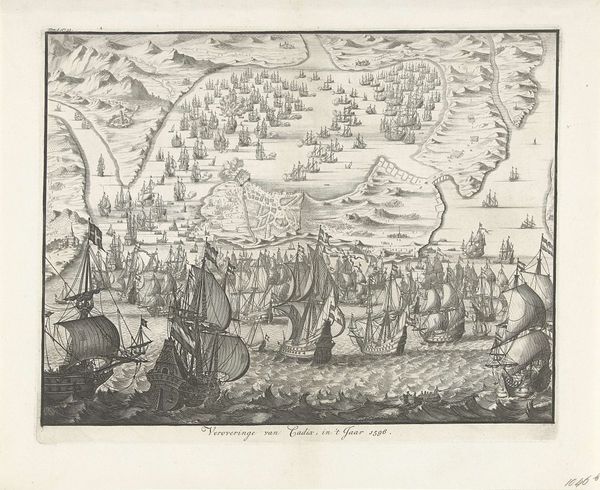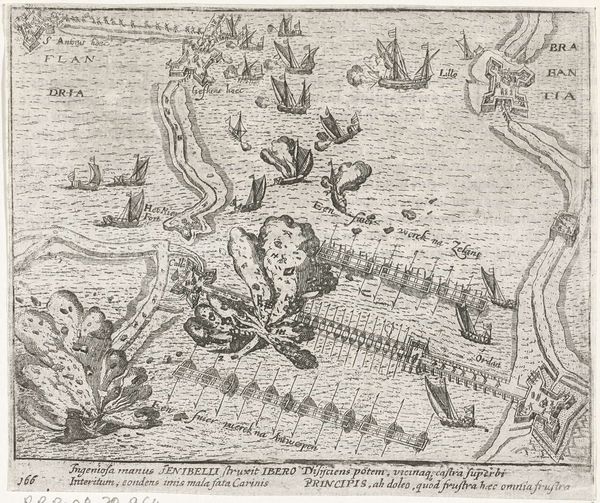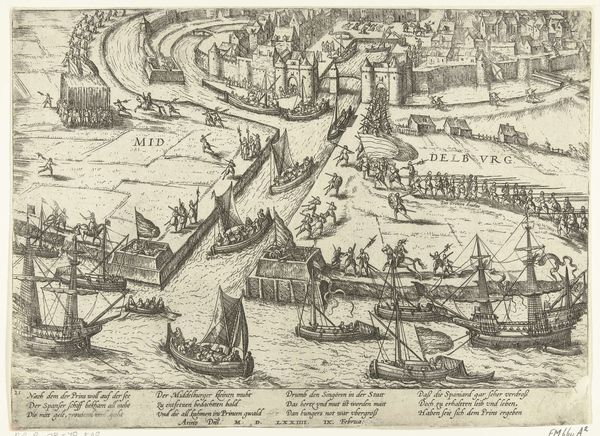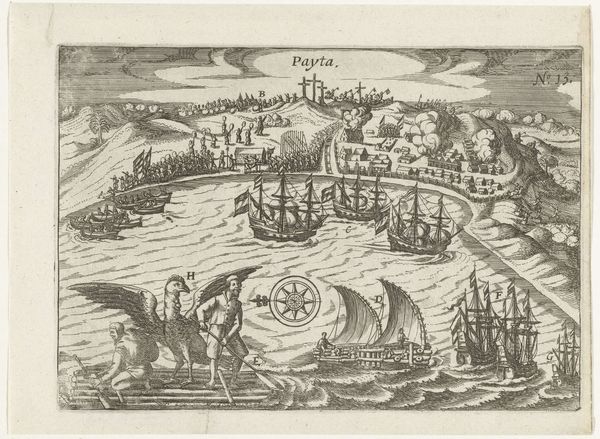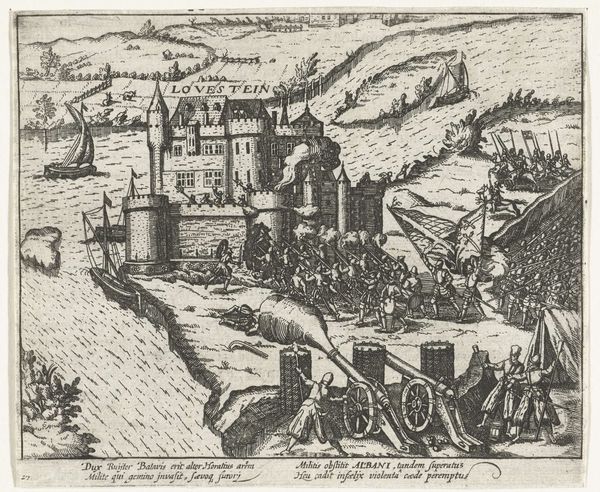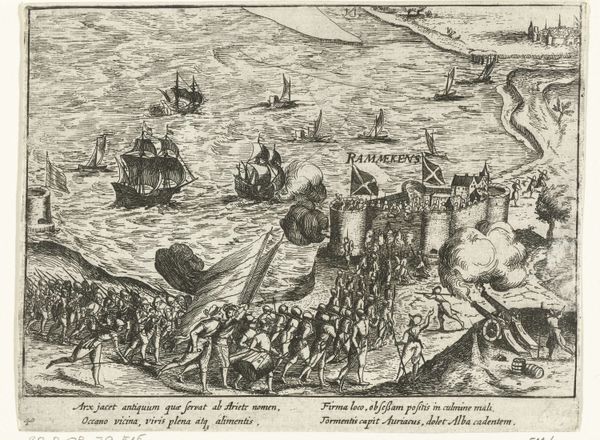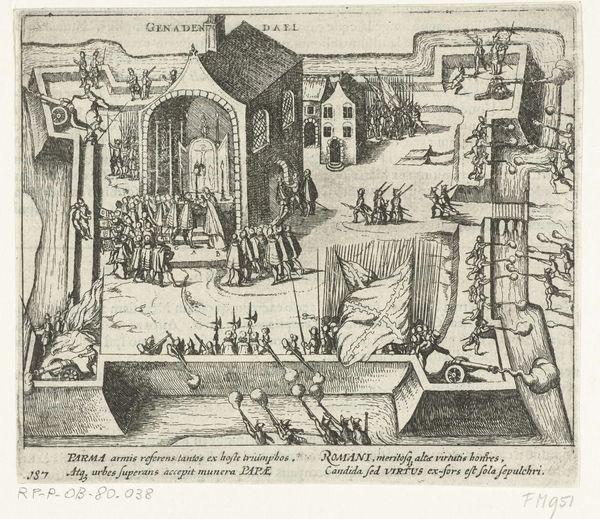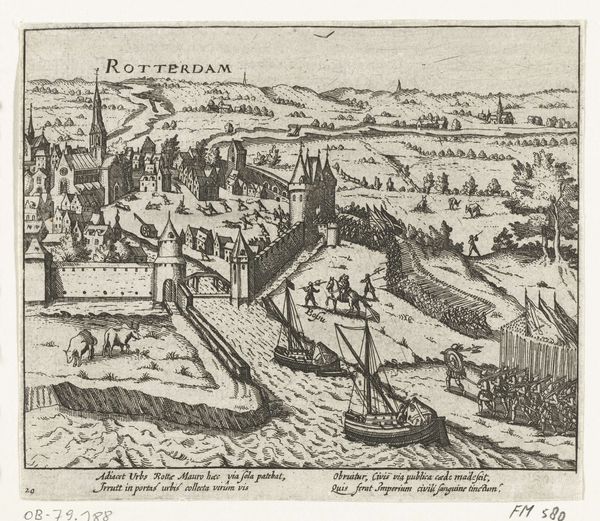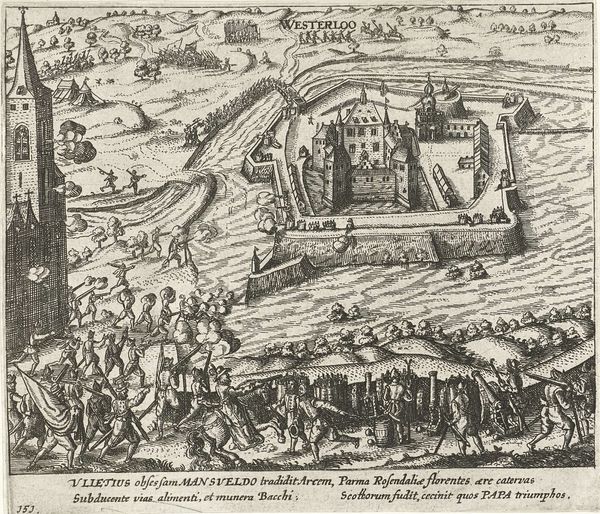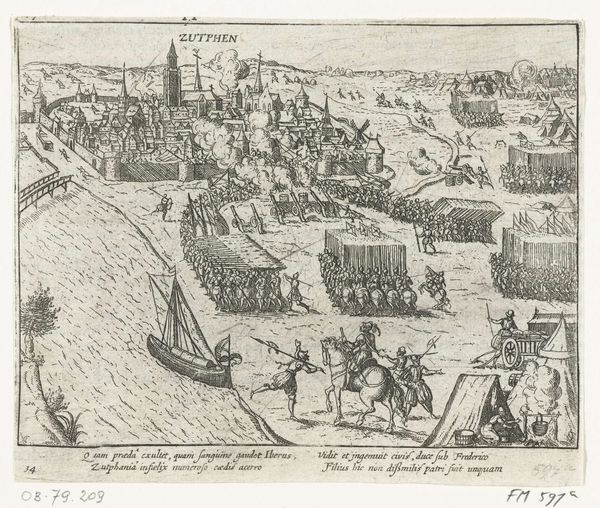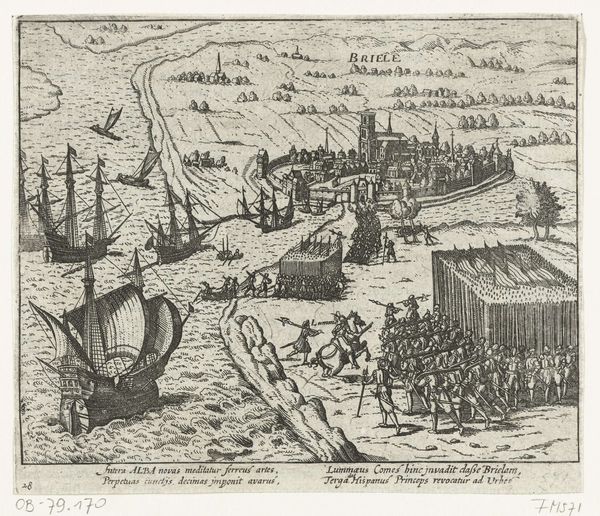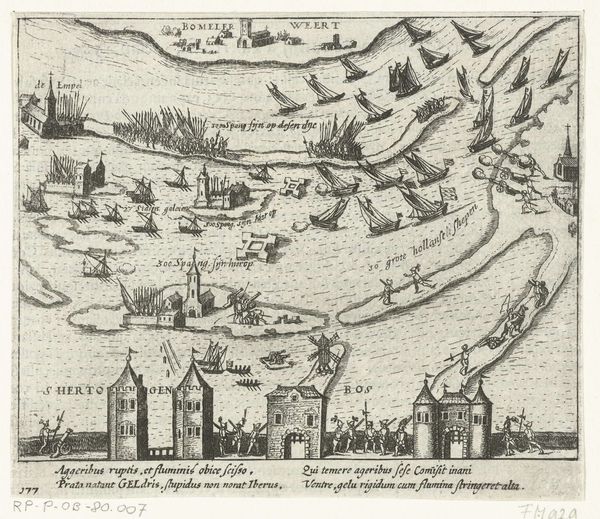
print, engraving
#
baroque
#
pen drawing
# print
#
cityscape
#
history-painting
#
engraving
Dimensions: height 137 mm, width 163 mm
Copyright: Rijks Museum: Open Domain
Curator: Before us we have an engraving, "Middelburg gaat over naar de prins, 1574," dating from 1613-1615, held at the Rijksmuseum, though created by an anonymous hand. Editor: My initial impression is one of meticulous detail despite its modest scale. There's a curious sense of controlled chaos—a teeming scene, yet everything is rendered with incredible precision. The city and boats are highly detailed. Curator: Precisely. Note the strategic arrangement of forms—the solid, unwavering lines that delineate the city juxtaposed against the undulating curves representing the water and sails. Semiotically, the city stands as a symbol of stability and governance, even resistance. Editor: Resistance forged through intense labor. These ships, the result of laborious craft and navigation, aren't mere symbols. Think about the shipbuilders, sailors, soldiers – the collective human effort distilled into each line of this print. The raw materials, transformed by skilled hands. How does the material origin affect your formal reading? Curator: A fair point. It adds depth to our understanding. The labor intensifies the sense of triumph and civic transformation that the image aims to portray. Consider, too, how the monochrome medium reinforces the historical gravity of the event—there is no spectacle beyond the depicted form and texture. The details compel contemplation. Editor: Right, and also this method of distribution through prints allows a broad reach beyond the elite and celebrates labor and triumph as the subjects advance. This feels significant as the print medium enables a different type of dissemination of political ideology from craft workshops. It feels inherently more democratic, even rebellious, given its historic context. Curator: An astute observation. This allows us to reconsider the work as more than a chronicle of the transfer of Middelburg, but as a testament of a broader shifting ideological perspective. It highlights the intricate interplay between subject, object, material conditions and meaning. Editor: So the material context pushes against the otherwise strong structural reading...I'll have to spend more time considering it all now!
Comments
No comments
Be the first to comment and join the conversation on the ultimate creative platform.
